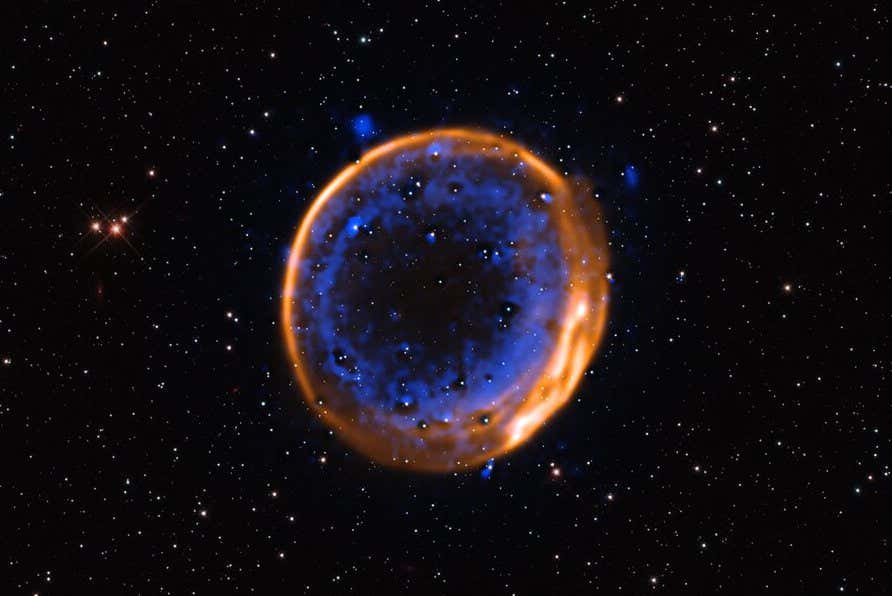Pictures of a distant supernova remnant show two concentric rings, providing clear evidence that exploding white dwarf stars go boom twice in the blink of an eye
By James Woodford
2 July 2025
Two concentric rings appear around the supernova remnant SNR 0509-67.5, indicating that it exploded twice
ESO/P. Das et al. Background stars (Hubble): K. Noll et al.
A white dwarf star around 160,000 light years away appears to have exploded twice – the first evidence astronomers have seen that such supernovae involve a double detonation.
White dwarf stars are dead stars that were once like our sun, but have exhausted their nuclear fuel, leaving an Earth-sized core. If a white dwarf draws in material from a nearby star, its mass can reach a point where it reignites and explodes as a type Ia supernova.
Read more
Why the big bang may not have been the beginning of the universe
Advertisement
The mechanism behind a white dwarf becoming a supernova hasn’t been well understood. Some astronomers have hypothesised that there may need to be two explosions, but until now, there has been no evidence of this.
Priyam Das at the University of New South Wales in Canberra, Australia, and his colleagues studied spectra collected by the European Southern Observatory’s Very Large Telescope in Chile of a supernova remnant in the Large Magellanic Cloud. Images of the remnant, SNR 0509-67.5, clearly show two concentric shells that exploded outwards.
Das says the white dwarf must have somehow collected helium onto its surface – either from another nearby helium white dwarf or a helium-rich massive star – and, once enough had accumulated, it exploded.
